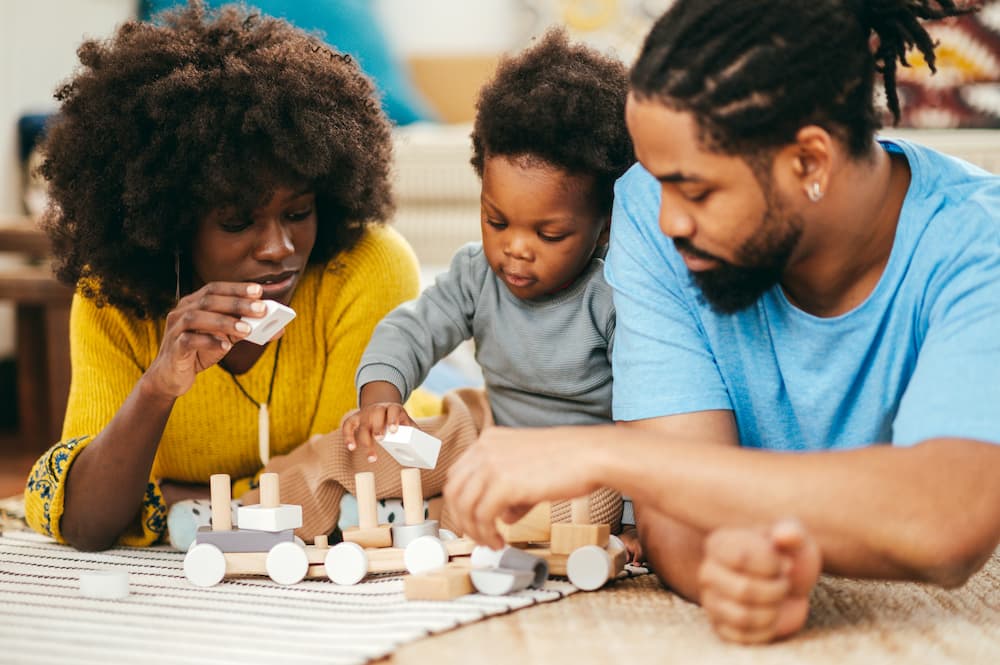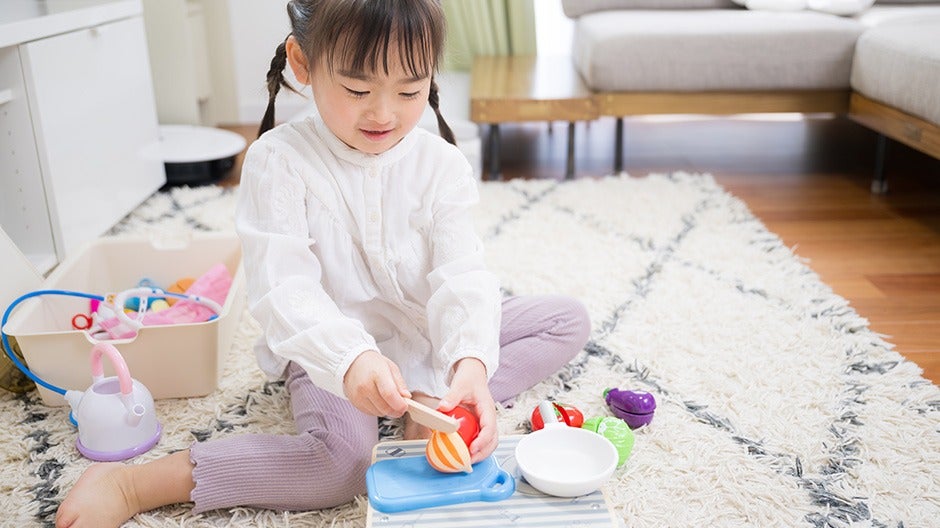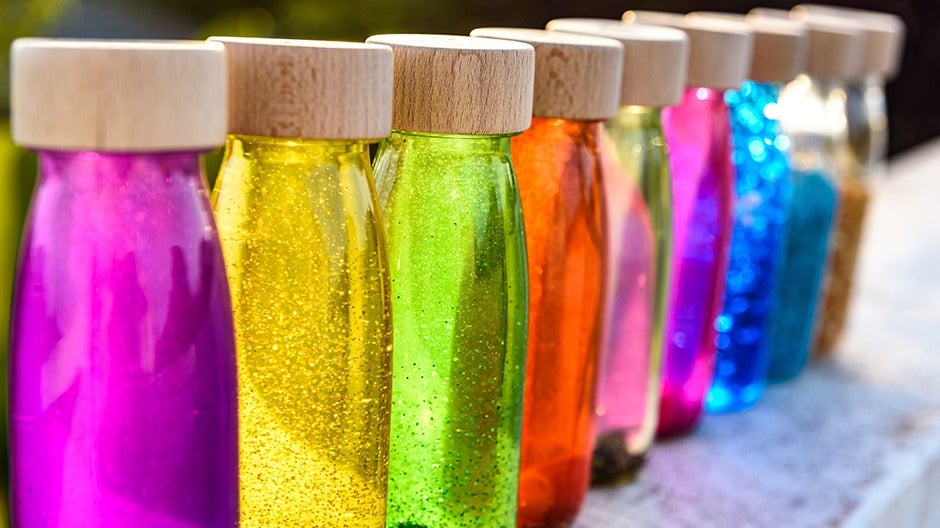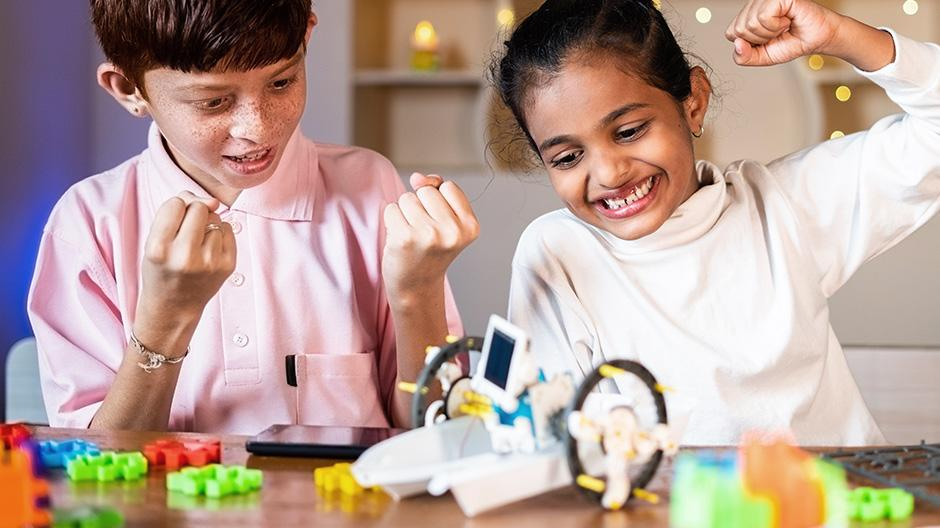Learning shapes isn’t just about teaching your child how to draw a circle or square. For 2-year-olds and 3-year-olds, recognizing shapes is an important Core Skill, one of the 5 C’s at the heart of the Begin Approach to helping kids thrive in school and life.
Shapes fill the world around us. A window is a rectangle, a wheel is a circle, a chip is an oval or a triangle. Learning shapes can take place anywhere, anytime, and it helps kids in math, reading, science, and art!
The Short Cut
- Learning shapes is a Core Skill, one of the 5 C’s that help kids thrive in school and life
- When kids learn to identify shapes, they also learn to distinguish between objects and categorize things
- Learning shapes can help kids with counting, problem-solving, patterns, and spatial recognition
- Parents can help by pointing out shapes in everyday life, providing toys that use shapes, and playing games with their kids that teach shapes
Why Learning Shapes Matters
Shapes are all around us. If you glance around the room you’re in, you can probably identify a handful of shapes within seconds.
For a preschooler, learning shapes provides an early step to understanding how numbers and objects relate to one another. Pre-K math will show kids how easy it is to count the number of sides on a single shape, helping them learn to apply counting skills to an object.
But that’s not all shapes are good for! Learning shapes also helps kids get a grasp on the following important Core Skills:
Distinguishing between Objects
Learning shapes helps your child learn to differentiate between objects (“This block has four sides. This block has six sides.”).
As kids explore how shapes are different from one another, they’ll pay attention to the little details of each shape. This ability to focus on details, identify differences, and categorize things helps them learn no matter what skill they’re tackling.
Spatial Reasoning and Problem Solving
You’ve probably seen shape puzzles. Their pieces are basic shapes that kids can pull out from a base, leaving a blank space where the child fits the shape back in later.
They’re popular for a reason. The blanks inside the puzzle develop your child’s spatial reasoning and problem-solving skills, as they have to try multiple shapes until they find the right one to fit each space.
Learning about shapes through this kind of hands-on play helps develop Critical Thinking, another of the 5 C’s.
Categorization
Categorizing objects is an important early Core Skill because it lays the foundation for more complex math abilities later.
In math, kids will learn to categorize numbers into sets and subsets (think even and odd numbers, numbers greater than 10, even numbers containing a 2, etc.). A child who can sort objects based on their shape (or their color and size) will have a head start in understanding how to do this.
Counting and Patterns
Like we mentioned before, shapes help your child learn how to count, because many shapes are identified by the number of sides they have.
But shapes can also help kids learn how to form patterns! As your child gets more comfortable with shapes, you may find they start making patterns with shape-based toys like magnetic tiles or blocks (red square, blue square, green square, red square, blue square, green square). You can also demonstrate this to them when you play or draw together.
Pattern recognition matters for kids (and adults!) because people often look for patterns to make sense of the world. Detecting patterns can help them understand how and why something works the way it does. For children, patterns are also related to the comfort they find in daily routines. For instance, a bedtime routine that always follows the same steps (brushing teeth, reading a story together, hugs, then lights out, and repeat it all over again tomorrow and the next night and the next night) is a kind of pattern. It helps the child understand what comes next.
Your child’s life will be full of patterns, and playing with patterns using shapes can help them get comfortable recognizing patterns and creating their own.
4 Fun Activities for Learning Shapes
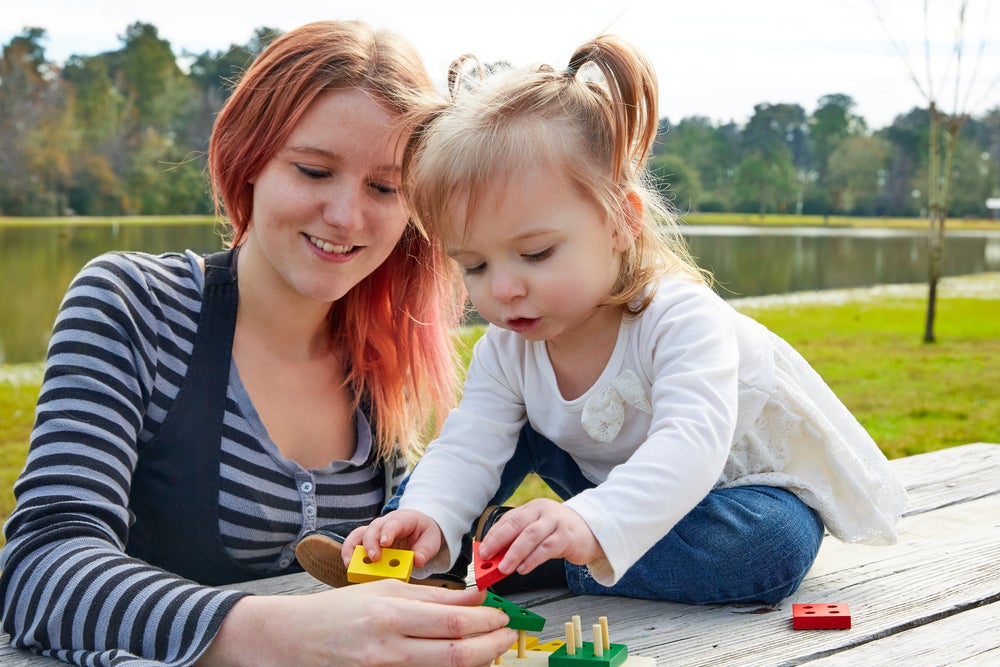
Here are some of our favorite activities for learning shapes. Try them at home with your child!
1. Shape Scavenger Hunt
What You’ll Need
- Good weather (if you choose to do this outdoors)
- A cheat sheet of basic shapes
- A marker
What to Do
You and your child can go for a walk in the neighborhood or hunt for shapes inside the house on a rainy day.
You’ll snoop around the house like sneaky shape detectives, using your “cheat sheet” of shapes to keep a tally of how many times you can find each shape in your home.
If this is the first time your child has attempted identifying shapes in their environment, acting as an encouraging guide can be a great help!
Help them recognize the ways shapes naturally occur in everyday life—mirrors can be rectangles or circles, pizza slices are like triangles, and so on.
Keeping track of what your child can find will give both them and you some insight. They’ll start to see how many shapes are all around them, and you may notice which shapes your child is naturally good at recognizing, and which they need a little more help identifying.
2. Play Dough Tracing
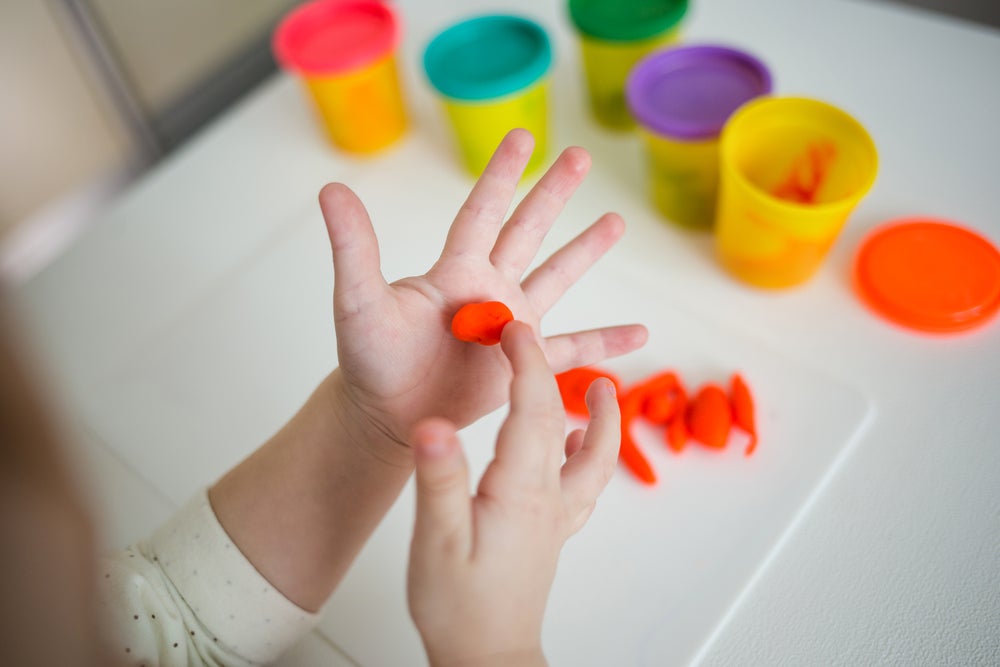
What You’ll Need
- Several sheets of paper
- A marker
- Play dough of different colors
What to Do
Start by prepping the pieces of paper. Each sheet will hold a single type of shape.
For our example, we’ll have one sheet for squares, one for circles, and one for triangles. Feel free to add more shapes or start small with only one.
Start with a single shape, like a square. You’ll want to draw several squares of drastically different sizes on a single sheet of paper. Use thick, bold lines so your child can clearly see the perimeter of each shape.
Next, your child will use different colors of play dough to “fill” each square outline. Using different colors makes it easy to highlight a distinguishing characteristic between the squares—their size!
If your child is familiar with shapes already and you want to make this more advanced, you can draw several different shapes onto one piece of paper.
For our example, we will use circles, squares, and triangles (try rectangles, ovals, semicircles, and pentagons for more advanced learners).
This time, your child will fill the outlines based on the type of shape they are. So all circles will get the same color of play dough, while all ovals get a different color. They will repeat this process until all of the shapes are full.
Finally, they can count how many of each shape (and color) they have.
3. Shape Stamp Paintings
What You’ll Need
- Sponges you’re comfortable cutting up
- Kid-safe paint (watered down)
- Sheets of paper
What to Do
This activity requires a bit of preparation before the fun can get started, but the masterpieces your child will make are worth it!
Begin by cutting up the sponges into a mix of different identifiable shapes. We recommend incorporating both basic shapes and more interesting shapes, some with sides that are easy to count.
Squares, circles, stars, ovals, and hearts are all great options.
After all the sponges are cut, set out a few different colors of paint. It’s not necessary to assign specific colors to specific shapes, as a mix of both will allow your child to identify flexible patterns once the activity is complete.
With everything set, your child is ready to get splashing with the paint and sponges (figuratively speaking, of course!). They’ll use their sponges to stamp out a variety of shapes in multiple colors.
Once everything is dry, you can encourage them to identify how many of each shape they stamped, how many times they used certain colors, and so on. Younger kids may need you to model this and do it with them (“You made three green squares! Let’s count the red ones together.”).
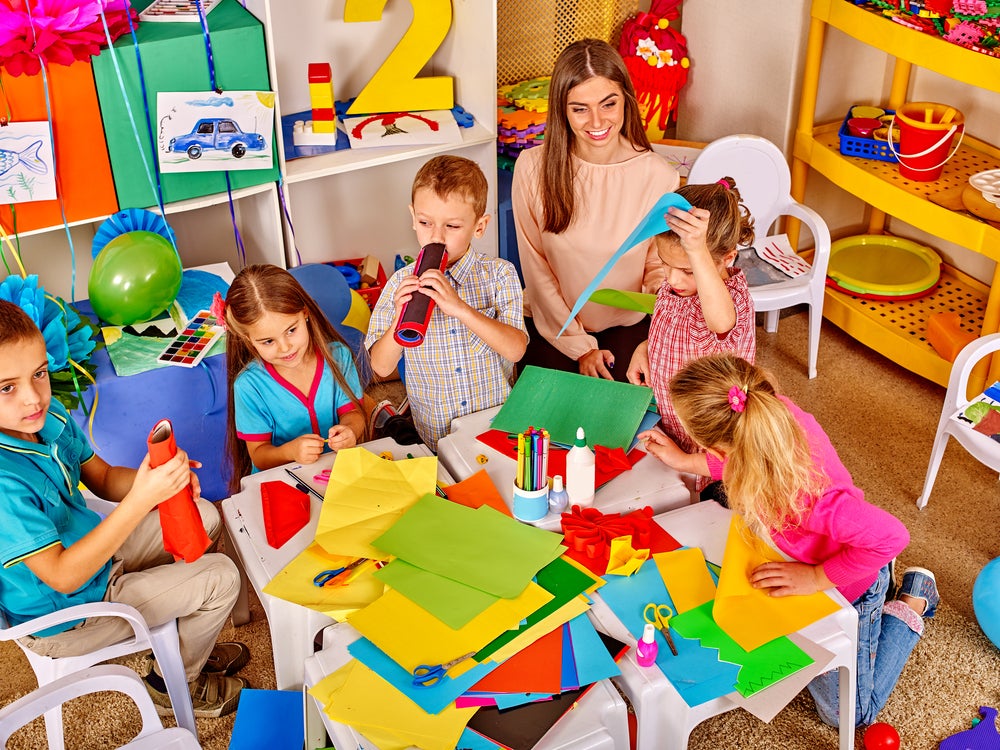
4. Shape Pizza
What You’ll Need
- Colored construction paper (red, yellow, green, brown, black, and white)
- Scissors
- A single die
What to Do
You and your child will be opening your own pizzeria! The “secret ingredient” to your delicious pizza? Shapes!
To make a pizza, cut out a large circle for your crust. Then cut out a variety of ingredients. Depending on what your child likes to eat, you can adjust the ingredients each of your shapes will represent.
For our example, we will use these ingredients:
- Circles for pepperoni
- Triangles for cheese
- Rectangles for peppers
- Squares for mushrooms
- Semicircles for olives
Make a menu with the shapes and what they stand for. Then place an order for which topping you want and have your child roll the die to see how many of that topping the pizza will have. You can start with one topping to make the activity easier.
For example, if you want peppers and your child rolls a 2, they’ll place 2 rectangles on the pizza. If your child isn’t counting yet, count the dots on the die with them to show them how. You can count out the toppings if necessary as well.
We recommend referring to the shape names as you order and again when “checking” the order. You could say, “That’s it! I get four circle pepperonis. Yum!” You can then switch roles and let your child order a pizza.
To play with older children or make the game a bit more challenging, order a pizza with more than one topping, with your child rolling the die once for each topping to determine how many you get.
Once you’re finished with one pizza, you can glue the shapes to the paper to save as a keepsake or remove them and make another pizza!
Learning Shapes Is Just the Beginning
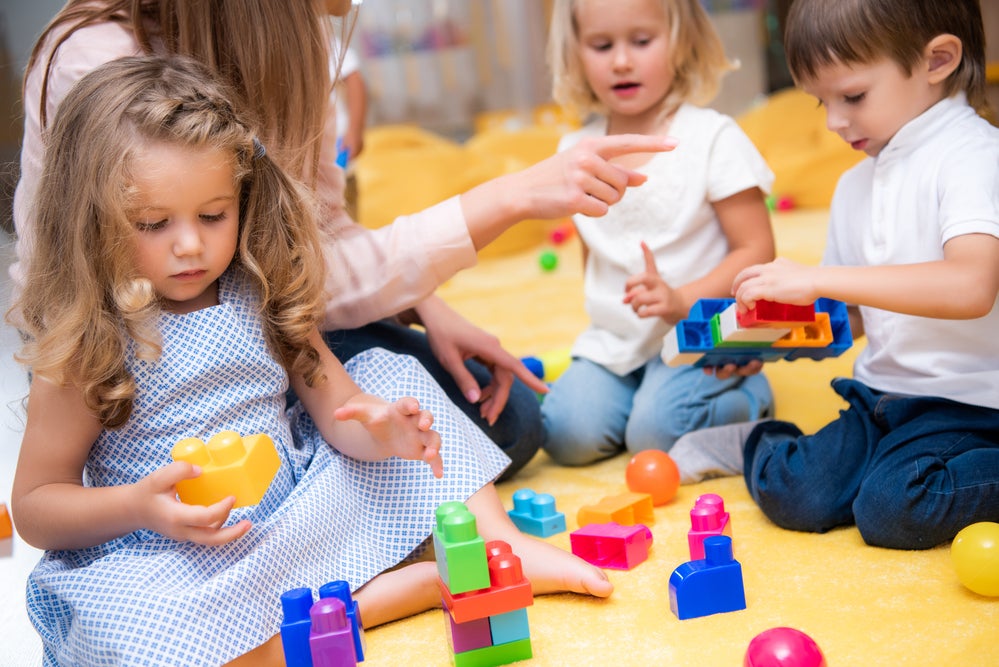
Learning shapes is a fun and exciting way to work on Core Skills while playing with your kids. You’ll be hunting through the house, making paper pizza, goofing around with play dough, and having a great time—but you’ll also help lay the foundation for them to thrive in school and life.
For more hands-on ways to help your kids learn from Begin, check out our number and counting activities for preschoolers, or try any of our award-winning monthly activity boxes from Little Passports.
And if you want kid-safe, ad-free screen time that will help your kids with Core Skills and the rest of the 5 C’s, start the free trial on our award-winning HOMER App. It has tons of shape activities for your child, like our Castle Creator and Pizza Parlor, where they’ll make pizzas for customers who pick exactly how many toppings they want.
There are lots of ways to help your kids learn shapes while having a great time playing with them. We hope you’ll give some a shot. You’ve got this!
